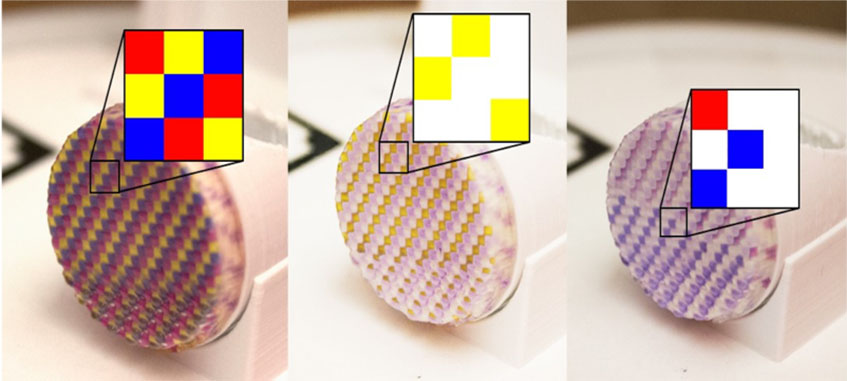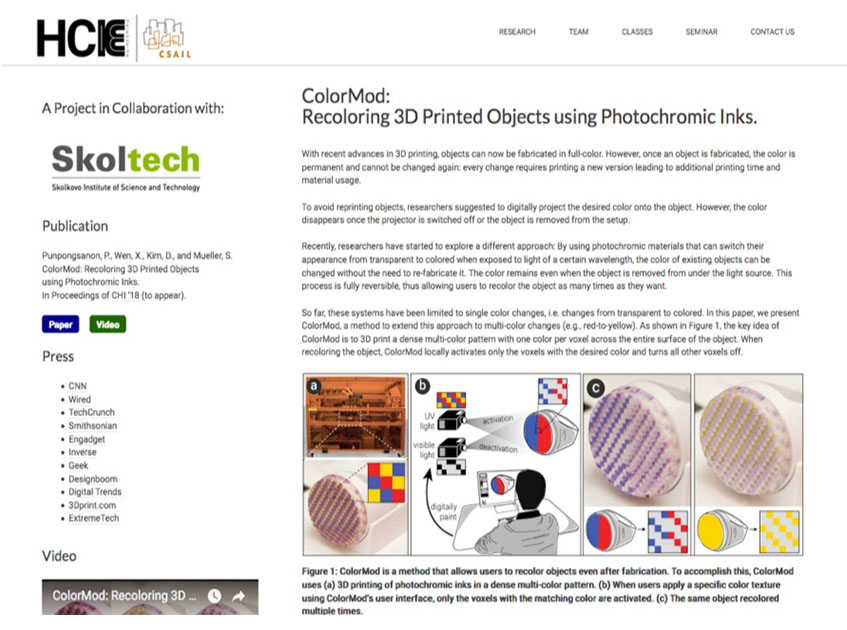PI: Stefanie Mueller, Department of Electrical Engineering & Computer Science, MIT
Abstract
Health monitoring devices in the form of wearable technology are becoming more and more popular among consumers. By permanently tracking measurements of e.g., blood pressure, body temperature, and vision quality, this new technology has the potential to significantly improve people’s lives. To receive strong and accurate signals from health monitoring sensors, factors such as the placement of the sensors and the alignment with the user’s skin play a crucial role. Unfortunately, today’s wearable health monitoring technology is mass-manufactured and thus follows a one-fits-it-all approach. Since each person’s body is different, inaccuracies in measurements are created, which can lead to wrong interpretations of a person’s condition. In this project, we will leverage the potential of personal fabrication to create one-off products: We will develop a novel product design environment that integrates parametric design with scans of the user’s body to create health monitoring wearables with highly accurate sensor placement.
Report
- Project Title: A Novel Product Design Environment for Health Monitoring Wearables
- Principal Investigator: Department of Electrical Engineering & Computer Science, MIT
- Grant Period: February 2017 – January 2018
1. MIT-Skoltech Symposium & Collaboration with Prof. Tsetserukou
As part of the Year 1 Seed Fund Grant, Prof. Stefanie Mueller participated in the MIT- Skoltech Symposium 2017 “Shaping the Future: Big Data, Biomedicine and Frontier Technologies” in Moscow on April 25 & 26, 2017, where she met Prof. Dzmitry Tset- serukou (Skoltech). Based on their mutual interests and the discussions at the Symposium, Prof. Stefanie Mueller retargeted the project to investigate color-changing materials (photochromic inks) that are now an integral part of their Year 2 collaboration.
2. Impact on Society
In this Year 1 Seed Fund Grant, Prof. Stefanie Mueller developed a method to change the color of existing objects. Figure 1 shows the same object recolored three times. Prof. Stefanie Mueller accomplishes this by 3D printing a dense multi-color voxel pat- tern across the surface of the object and then selectively activating and deactivating in- dividual voxels. Voxels can be made transparent or colored by either shining a UV light or visible light from an office projector onto them. The process can of recoloring can be repeated infinitely. Since the hardware consists a low-cost UV light and a regular projector, the entire setup only costs a few hundred dollars.

Figure 1: Changing the color of existing objects using photochromic inks.
3. Project Personnel: Training & Professional Development
The Year 1 Sees Fund Grant provided Postdoctoral Associate Parinya Punpongsanon with the opportunity to join the research lab of Prof. Stefanie Mueller to further train his research skills on a new project, which led to him being successfully hired as a faculty member at Osaka University. During his time on the project, Parinya also mentored undergraduate student Xin Wen, who was funded through MIT’s SuperUROP pro- gram, and undergraduate Kevin Reuss. Moving forward, Prof. Mueller and Prof. Tsetserukou have agreed to host visiting stu- dent from the other PI’s group for internships and to visit each other’s lab in the next months. The details for visits during the current calendar year are being discussed at the moment. Students from Prof. Tsetserukou’s group include Hasan Zabihee, Ivan Ka- linov, Yuri Sarkisow, Evgeny Tsykunov, Gregory Yashin, Dima Mironov, Artem Pav- lov, and Aleksand Petrovskii. Students from Prof. Mueller’s group include Dishita Tu- rakhia, Martin Nisser, Junyi Zhu, and Mustafa Doga Dogan.
4. Dissemination of Results
The project outcome of the Year 1 Seed Grant can be viewed on Prof. Stefanie Mueller’s website http://hcie.csail.mit.edu/research/colormod/colormod.html

Figure 2: Project Website http://hcie.csail.mit.edu/research/colormod/colormod.html
The project was accepted for Publication at the ACM CHI 2018 conference. Moving for- ward, Prof. Tsetserukou and Prof. Mueller are planning a joint publication for ICRA 2018 or IROS 2019 that is building on the work in the Year 1 Seed Grant Phase. The project was widely covered in the press, including CNN, BBC, Wired, TechCrunch, and Engadget.
5. Potential Commercialization
Based on the press outreach, Prof. Stefanie Mueller received many requests for potential commercialization of the project, including requests from Ford Motor Company and Sawgrass Digital Printing Solutions. At the moment, Prof. Stefanie Mueller is not inter- ested in expanding this research project into a startup, but would be interested to sup- port efforts in this direction made by somebody within the MIT-Skoltech collaboration.
